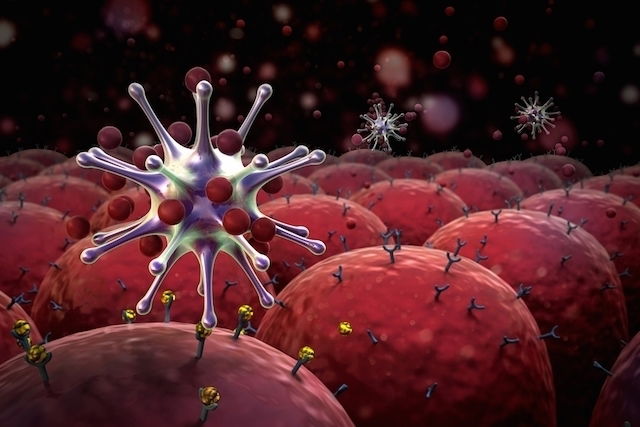Lymphocytes are a type of white blood cell that act as defense cells in the body. There are 2 types of lymphocytes: B-cells and T-cells. Each of these play a different role in the immune system.
Lymphocyte levels can be evaluated through a blood test. A high level of lymphocytes is usually a sign of infection, while a low level of lymphocytes is related to an abnormality within the bone marrow.
It is important for a doctor to assess results together with a physical exam and other blood test results to to determine a patient's health status and reach a diagnosis.

Reference ranges
Normal lymphocyte levels are usually between 1000 to 2900 lymphocytes per mm³ of blood, which represents 20 to 50% of the relative concentration. These reference ranges can vary from lab to lab.
When levels are above or below the reference ranges, they are referred to as lymphopenia (for low levels) or lymphocytosis (for high levels).
1. Low lymphocytes
Low lymphocytes can be caused by:
- Some infections, like HIV or COVID-19;
- Side effects of medications, like corticosteroids and those used in chemotherapy;
- Nutritional deficiencies;
- Excessive alcohol intake;
- Autoimmune diseases, like systemic lupus erythematosus or rheumatoid arthritis;
- Some rare genetic diseases, such as common variable immunodeficiency;
- Bone marrow problems, such as aplastic anemia or leukemia.
Lymphocytes are considered to be low when counts are below 1000 lymphocytes per mm³ of blood.
2. High lymphocytes
High lymphocytes can be caused by:
- Infections, like mononucleosis, influenza, toxoplasmosis, tuberculosis, mumps or measles;
- Side effects of some medications;
- Allergic reactions;
- Thyrotoxicosis, a condition caused by excess thyroid hormones in the body;
- Surgical removal of the spleen
- Serious acute conditions, such as status epilepticus or heart problems;
- Some types of leukemia or lymphoma, in some cases.
Lymphocytes are considered to be high when counts are above 4000 lymphocytes per mm³ of blood.
Types of lymphocytes
The body produces 2 types of lymphocytes: B-lymphocytes (which are immature cells produced in the bone marrow and released to the bloodstream to make antibodies to fight bacteria, viruses and fungi) and T-lymphocytes (which are produced in the bone marrow and develop in the thymus).
Developed T-lymphocytes can be further categorized into 3 groups:
- CD4 T-lymphocytes: these help the B-lymphocytes to eliminate infections. They are the first line of defense of the immune system. These are usually the main cells that are affected with HIV as those who are infected will usually have a CD4 level of less than 100/ mm³
- CD8 T-lymphocytes: These decrease the activity of other types of lymphocytes and are noted to be increased in cases of HIV
- Cytotoxic lymphocytes: these destroy abnormal cells or cells that are infected by viruses or bacteria
All lymphocyte tests, especially CD4 or CD8 tests, should always be interpreted by a doctor to evaluate for the presence of illnesses, like HIV.
Atypical lymphocytes
Atypical lymphocytes are lymphocytes that present with varied shapes. These usually emerge with infections, particularly viral infections like mononucleosis, herpes, AIDS, rubella and varicella. Atypical lymphocytes can also be noted on blood tests during bacterial infections (like tuberculosis, and syphilis), protozoan infections (like toxoplasmosis), when there is a hypersensitivity to medications, or with auto-immune diseases (like lupus).
Normally these lymphocyte levels will return to normal (which is 0%) after the foreign invader is eliminated.
These lymphocytes are considered to be active T-lymphocytes that are produced in response to infected B-lymphocytes. They work the same as typical lymphocytes, although they are generally larger and have different shapes.






























